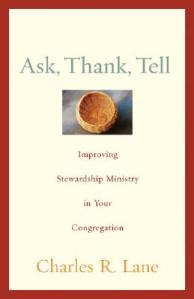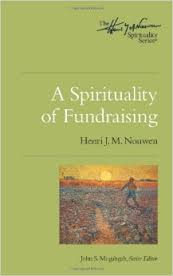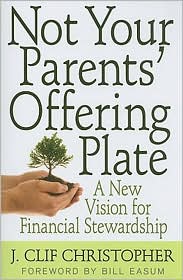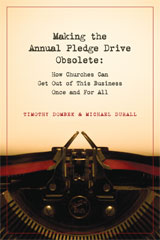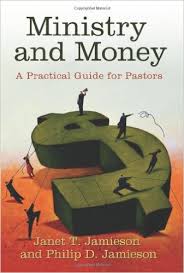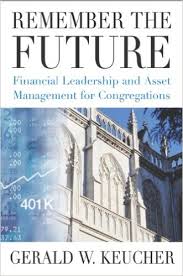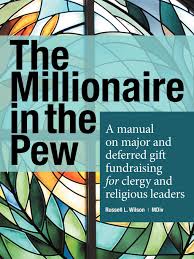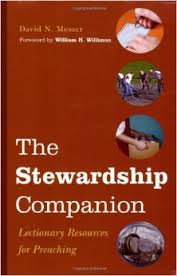No matter how hard we try to get across the concept of estimating our giving (pledging) as a spiritual practice, some people just do not get it. Often we have members who seem to complete their estimate of giving form (pledge card) as an afterthought. So not much thought goes into figuring the amount.
Many people’s giving to God gets tied to questions such as ‘What can I afford?’ or ‘What’s my fair share?’ or ‘What does the church need from me or need to balance its budget?’ I call these membership questions. What clergy need to inspire their members to do is contemplate the “discipleship question” when completing a pledge form or estimate of giving.
The discipleship question goes like this: “What is God calling me/us to give as a proportion of my/our income in response to all of God’s gifts to me/us and God’s presence in my life/our lives?” This question may already be part of the inner conversation (or out loud conversation) that some of your households already have surrounding pledging (or estimating). Those people who already give faithfully and generously via pledge or estimate deserve our regular, personal thanks, throughout the year.
Do These Three Things
For all other givers in your congregation, try this: First, invite people to pray about what they want to give. This may be a novel idea for some of your members. That’s OK. We all have to start somewhere. You may even want them to read and meditate on just a few passages of scripture before completing their estimate of giving. Even better!
Useful scriptures would be: Deuteronomy 8:11-18; Luke 7:36-50; Luke 8:1-3; Luke 12:13-34; Luke 19:1-10; 2 Corinthians 9:6-13; Mark 10:17-31; and Matthew 6:19-33. Feel free to add others that speak to you, but do not omit the Deuteronomy or Luke texts—they’re just too important to pass up.
Give People a Better Question
The second thing you want to do is introduce the discipleship question. Say:
When you contemplate what you (and your spouse/partner or family) want to give, consider this question above all others: “What is God calling me/us to give as a proportion of my/our income in response to all of God’s gifts to me/us and God’s presence in my life/our lives?”
People who prayerfully consider this question find they are more ready to challenge themselves in giving because they have taken time to realize God’s presence in their lives and want to show God their gratitude.
When the pledge drive (sic) is over, be certain that you hand-write thank you notes to all persons who pledge—or complete an estimate of giving form. They need to hear your heartfelt appreciation for their commitment.
Adding a Personal Touch
Lastly, for those who in past years have consistently been reluctant or unresponsive in completing a pledge, try this simple additional step: on a Post-It note, briefly hand-write a quick note and attach it to the blank pledge card or estimate of giving form before mailing it. Using your own sentiments, the note should read something like this:
- Dear John and Mary: Thank you for praying about this before completing it. God bless! <signed>
- Dear Frank and Carol: Thank you for praying about this first. Blessings! <signed>
- Dear Susannah: Thank you for your prayerful response in giving. God bless you! <signed>
Of course, you hand write and sign each note personally, making it as personal as possible. Keep it short, and use only your first name in signing.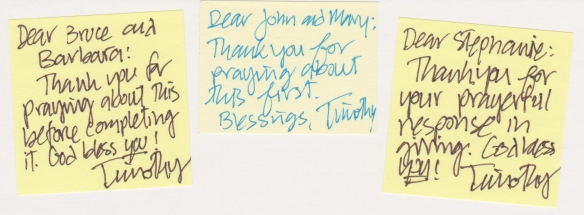
This personal note might be the inspiration needed to get those lowest givers to ask themselves a new question when it comes to making a pledge. The idea is to motivate the base 50% of your givers (the bottom half of your pledges when separated by the median pledge) into a new mindset about giving in the first place.
Putting Science on Your Side
Research shows that adding a hand-written Post-It note by the leader of an organization dramatically improves the response in replying or complying with the request expressed in the letter or survey or form on which you place the personalized Post-It note. (For more about this, see, “Yes! 50 Scientifically Proven Ways…,” by Robert B. Cialdini, et al; Chapter 10, pp. 50-52. Simon and Schuster: Free Press, 2008.)
I do not know if anyone has ever researched whether or not adding an encouraging Post-It notes improves pledging toward financial stewardship in congregations. Perhaps you will be willing to share the data regarding your response. The point here is that when the identified leader (the rector or member of the clergy in charge) adds a personalized hand-written request to respond to the form, it usually increases the response, in some cases dramatically.
Intuitively, I feel such a practice lends a nice personal touch—it is saying very directly, “Your prayerful response to this matters to me.” Who would not appreciate that kind of encouragement from his or her priest? And, if you have built relationships with your members all along the way, this will not be taken lightly, nor seen as inappropriate.
“But, Bob doesn’t like this…”
What if someone does take offense at this addition to the annual pledge mailing? Well, that’s good news! Far too often, we do not know how to start a conversation with others about what they say to themselves when they complete a pledge or estimate of giving. A complaint over this approach is an open door to having a conversation with them on that very topic—at their request. What an opportunity! I say; if they have opened the door, by all means, walk in.
So get cracking on those Post-It notes to stick on the pledge card or estimate of giving form before mailing to it your reluctant or unresponsive givers, and let me know how it contributes to their response rate.

